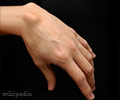Radiologists using computer-aided detection software for mammograms are more likely to interpret a benign growth as potentially cancerous than CAD systems.
Radiologists using computer-aided detection software for mammograms are more likely to interpret a benign growth as potentially cancerous than "human reviewers using their eyes and experience," and CAD systems do not help detect more cancers, according to a study.
CAD systems use complex algorithms to identify "suspicious" areas of a mammogram for a radiologist to review. The systems, which cost $50,000 to $175,000, were approved by FDA in 1998 and are sold by several companies, the New York Times reports.Medicare gives providers extra $20 more for administering mammograms that use CAD, and the systems are used in 30% of mammography centers, according to the National Cancer Institute.
For the study, Joshua Fenton of the University of California-Davis and colleagues examined 429,345 mammograms performed at 43 medical centers from 1998 to 2002. During the study period, seven of the centers began using CAD.
The study found standard mammography detected 4.15 cases of cancer per 1,000 women screened, compared with 4.2 cases of cancer per 1,000 women screened using CAD.
According to the study, CAD systems correctly identified which women had tumors and which did not 87.2% of the time, compared with 90.2% for standard screening. CAD systems also led to 31% more women being called back for more tests and 20% more biopsies, the study found.
The researchers estimate that for every additional woman who was diagnosed with breast cancer using CAD, 156 had unnecessary additional tests and 14 had unnecessary biopsies.
Advertisement
Source-Kaiser Family Foundation
SRM/M











